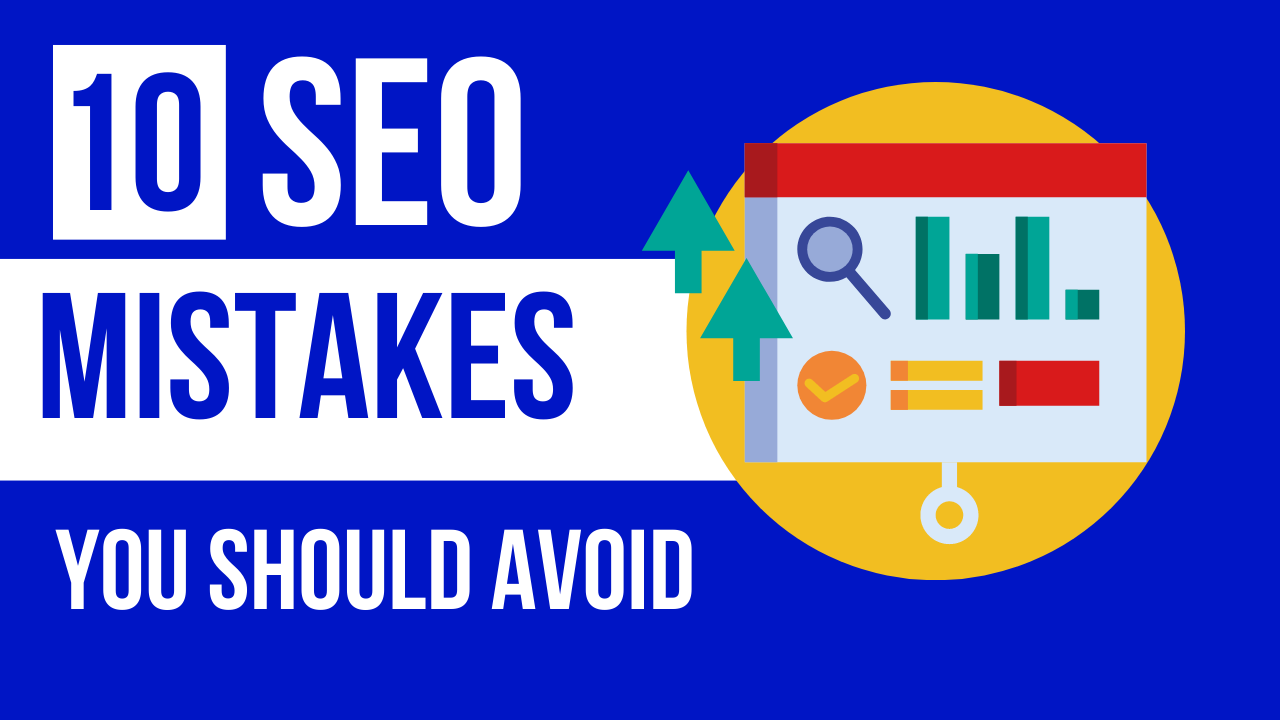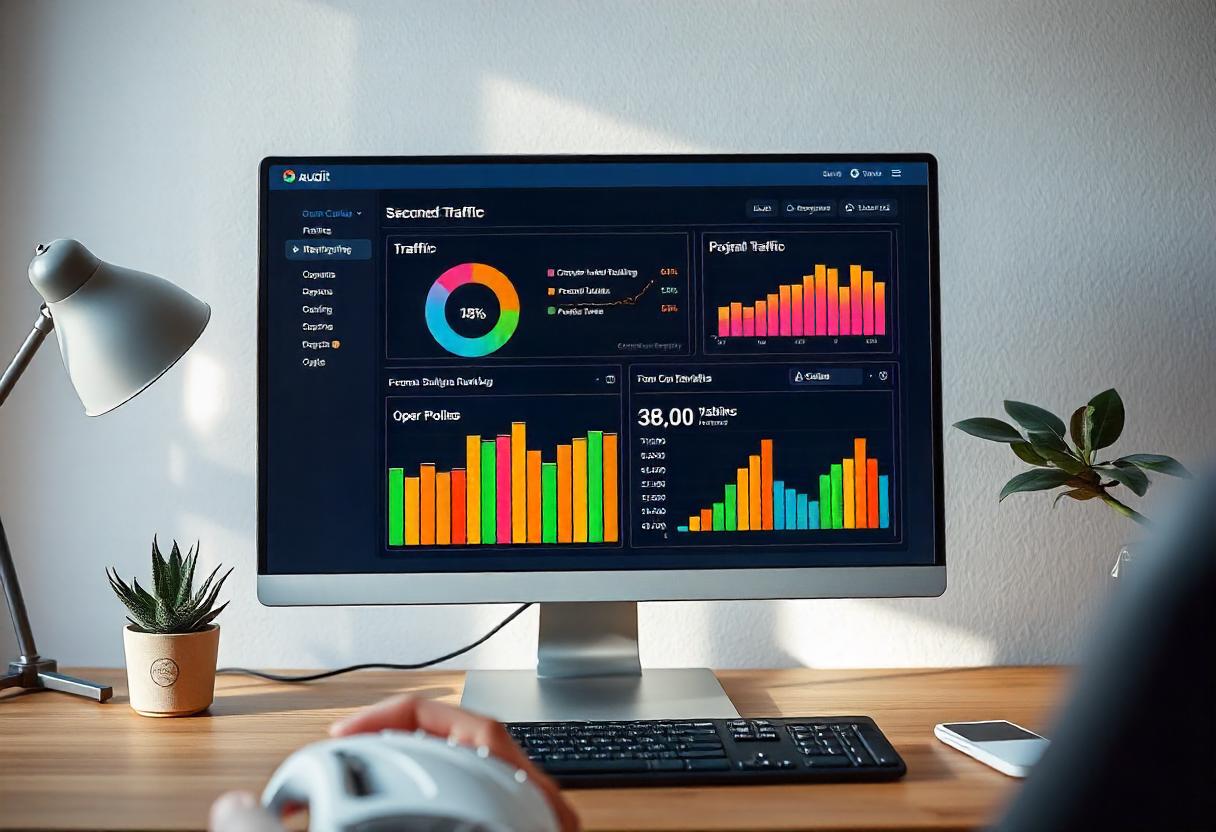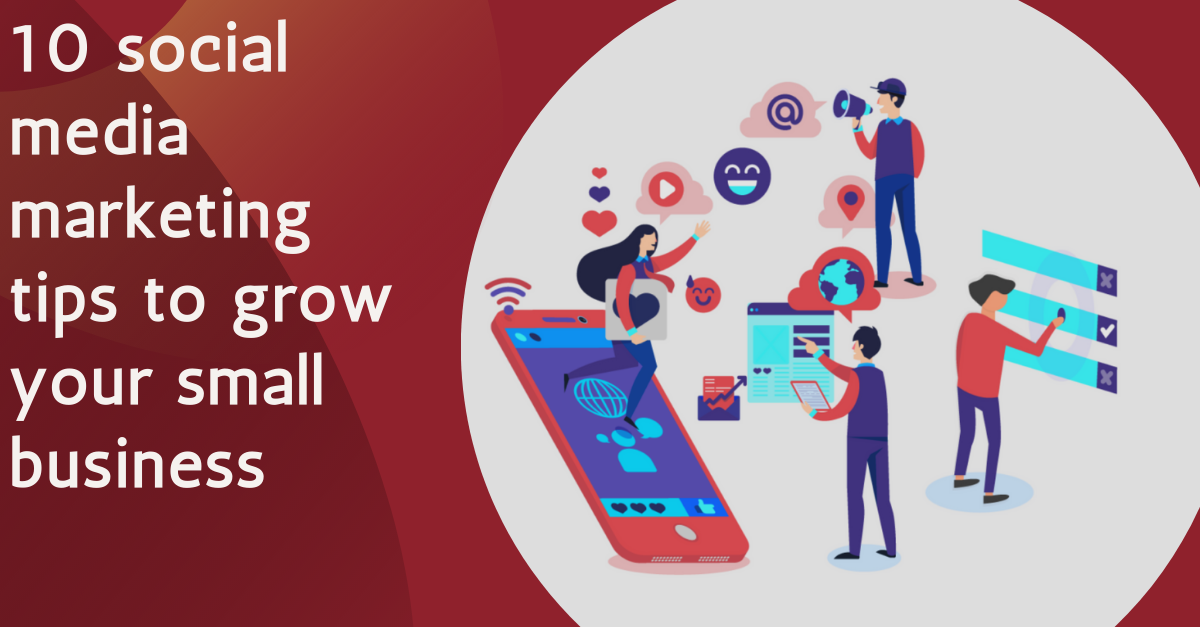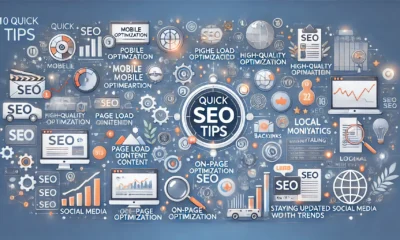Blog
Top 10 SEO Mistakes That Could Be Hurting Your Website

In the dynamic world of digital marketing, maintaining a strong online presence is essential. However, many businesses often make SEO mistakes that can significantly impact their website ranking and overall performance. Here, we outline the top 10 SEO mistakes that could be hurting your website and provide tips on how to avoid them. Whether you’re utilizing SEO services, engaging in SEO marketing, or focusing on local SEO, understanding these common pitfalls can help improve your search engine marketing efforts.
1. Ignoring Keyword Research
Keyword research is fundamental to any Google SEO strategy. Without thorough keyword research, you might be targeting the wrong terms, resulting in low traffic and poor conversion rates. Utilize tools like seositecheckup to identify relevant keywords that your audience is searching for.
2. Poor Quality Content
Content is king in the SEO world. However, producing low-quality, irrelevant content can hurt your website ranking. Ensure your content is valuable, informative, and well-optimized for your target keywords to enhance your SEO optimisation.
3. Neglecting On-Page SEO
On-page SEO elements such as meta tags, headers, and image alt texts are crucial. Neglecting these aspects can result in missed opportunities to improve your site’s visibility. Regularly audit your site with seositecheckup to ensure all on-page elements are optimized.
4. Lack of Mobile Optimization
With the increasing use of mobile devices, having a mobile-friendly website is essential. A site that is not optimized for mobile can lead to high bounce rates and lower rankings on Google. Ensure your site is responsive and performs well on all devices to improve your local SEO and overall search engine marketing efforts.
5. Ignoring Local SEO
For businesses targeting a specific geographic area, local SEO is crucial. Neglecting local SEO can result in missed opportunities to attract local customers. Make sure to optimize your Google My Business profile and include local keywords in your content.
6. Slow Website Speed
Website speed is a significant ranking factor in Google’s algorithm. A slow-loading website can frustrate users and lead to higher bounce rates. Use tools like seositecheckup to monitor your website’s speed and implement necessary optimizations to enhance performance.
7. Poor Link Building Strategy
Backlinks are a key component of Google SEO. However, acquiring low-quality or spammy backlinks can harm your site’s credibility and ranking. Focus on building high-quality backlinks from reputable sources to boost your site’s authority.
8. Not Utilizing Analytics
Failing to track and analyze your SEO performance can lead to missed opportunities for improvement. Use tools like Google Analytics and seositecheckup to monitor your website’s performance and make data-driven decisions to enhance your SEO strategy.
9. Overlooking Technical SEO
Technical SEO involves optimizing the backend of your site, including site structure, XML sitemaps, and robots.txt files. Ignoring technical SEO can prevent search engines from properly crawling and indexing your site. Regularly audit your site’s technical aspects to ensure it is fully optimized.
10. Duplicate Content
Duplicate content can confuse search engines and dilute your site’s authority. Ensure all content on your site is unique and avoid copying content from other websites. Use tools like seositecheckup to identify and resolve any duplicate content issues.
Conclusion
Avoiding these common SEO mistakes can significantly improve your website’s performance and ranking on search engines. Whether you’re utilizing SEO services or handling your SEO in-house, understanding and addressing these pitfalls is essential for successful SEO marketing. Regular audits, using tools like seositecheckup, and staying updated with the latest SEO trends can help you maintain a strong online presence and achieve your business goals. By focusing on SEO optimisation and leveraging local SEO strategies, you can enhance your search engine marketing efforts and drive more organic traffic to your site.
FAQs
1. What is SEO, and why is it important for my website?
SEO, or Search Engine Optimization, is the process of optimizing your website to rank higher in search engine results pages (SERPs). It’s important because higher rankings can lead to increased visibility, traffic, and potential customers for your business.
2. How can I perform effective keyword research for my website?
Effective keyword research involves using tools like Google Keyword Planner, Ahrefs, or seositecheckup to find relevant keywords that your target audience is searching for. Focus on keywords with a good balance of search volume and competition.
3. What constitutes high-quality content for SEO?
High-quality content is informative, engaging, and relevant to your audience. It should be well-written, free of grammatical errors, and optimized for your target keywords without keyword stuffing.
4. How can I improve my website’s mobile optimization?
Ensure your website is responsive, meaning it adjusts to different screen sizes and devices. Use Google’s Mobile-Friendly Test tool to check your site’s mobile performance and make necessary adjustments to improve load times and user experience.
5. What are some effective local SEO strategies?
Optimize your Google My Business profile, include local keywords in your content, and encourage customer reviews. Additionally, ensure your business information (name, address, phone number) is consistent across all online directories.
6. How can I improve my website’s loading speed?
Optimize your images, leverage browser caching, minimize HTTP requests, and use a content delivery network (CDN). Tools like Google PageSpeed Insights and seositecheckup can help identify specific areas for improvement.
7. What are the risks of using low-quality backlinks?
Low-quality or spammy backlinks can lead to penalties from search engines, which can significantly harm your website’s ranking. Focus on building high-quality backlinks from reputable sources.
8. How often should I perform SEO audits on my website?
It’s recommended to perform SEO audits at least quarterly. Regular audits help you identify and fix issues promptly, ensuring your site remains optimized for search engines.
9. What is technical SEO, and why is it important?
Technical SEO involves optimizing the technical aspects of your website, such as site structure, XML sitemaps, and robots.txt files. It’s important because it ensures search engines can crawl and index your site effectively.
10. How can I avoid duplicate content on my website?
Ensure all content on your site is unique and avoid copying content from other websites. Use tools like Copyscape and seositecheckup to identify and resolve any duplicate content issues.
11. How do I know if my SEO strategy is working?
Use tools like Google Analytics, Google Search Console, and seositecheckup to monitor your website’s performance. Look for improvements in your search engine rankings, organic traffic, and engagement metrics over time.
12. Can I handle SEO myself, or should I hire a professional service?
You can handle SEO yourself if you have the time and willingness to learn. However, hiring professional SEO services can provide expertise and save time, helping you achieve better results faster.
Blog
The Ultimate SEO Audit Tools List: Boost Your Website’s Performance

In the competitive digital landscape, the performance of your website is critical to your success. With over 3.5 billion searches conducted on Google every day, businesses cannot afford to ignore their online presence. SEO (Search Engine Optimization) audits are essential for identifying areas that need improvement to enhance your website’s visibility and ranking on search engines.
At Orphic Solution, a leading 360-degree digital marketing company, we understand that optimizing your website is vital for driving organic traffic and increasing conversions. In this comprehensive guide, we will discuss essential SEO audit tools, including SEO Tool Adda, highlight the importance of blog submission sites for SEO, and outline the benefits of using bookmarking sites for SEO.
What Is an SEO Audit?
An SEO audit is a thorough examination of your website’s health and performance concerning search engine optimization. It evaluates several factors, including:
- Technical SEO: Assessing website structure, loading speed, mobile-friendliness, and more.
- On-Page SEO: Analyzing content quality, keyword usage, metadata, and internal linking.
- Off-Page SEO: Evaluating backlinks and social signals.
Regular audits help identify issues that may hinder your website’s ranking and overall user experience. By fixing these issues, you can improve your search engine visibility, enhance user engagement, and ultimately drive more traffic to your site.

Why Are SEO Audits Important?
SEO audits are crucial for several reasons:
- Improved Search Rankings: Identifying and fixing technical issues can significantly enhance your site’s visibility on search engines.
- Better User Experience: Audits often highlight issues such as slow loading times or poor mobile responsiveness, which can negatively affect user engagement.
- Higher Organic Traffic: Optimizing content, keywords, and meta tags helps increase organic traffic to your website.
- Informed Decision-Making: Regular audits provide valuable data that can guide your SEO strategies and marketing efforts.
Top SEO Audit Tools to Improve Your Website Performance
Using the right tools can streamline your SEO audit process. Here’s a list of some of the most effective SEO audit tools available today:

1. SEO Tool Adda
SEO Tool Adda is an all-in-one SEO platform that provides a comprehensive suite of features to help you optimize your website. It is particularly useful for small to medium-sized businesses looking for affordable yet powerful SEO solutions.
Key Features:
- On-Page Analysis: SEO Tool Adda analyzes each page of your website, providing insights into keyword usage, content optimization, and meta tags.
- Backlink Checker: This tool helps identify your backlink profile and assesses the quality of backlinks pointing to your site.
- Website Speed Test: A crucial aspect of SEO, the speed test feature evaluates your website’s loading time and provides suggestions for improvement.
- Mobile Optimization Analysis: With Google’s mobile-first indexing, ensuring your site is mobile-friendly is essential. SEO Tool Adda provides insights to enhance mobile usability.
Using SEO Tool Adda allows businesses to monitor their SEO health effectively and make data-driven decisions for optimization.
2. Screaming Frog
Screaming Frog is a powerful SEO spider tool that crawls your website and identifies technical SEO issues. It is especially beneficial for websites with a large number of pages, making it an invaluable resource for SEO professionals.
Key Features:
- Crawling Capabilities: The tool can crawl up to 500 URLs in its free version, providing a detailed analysis of site structure.
- Broken Link Detection: It identifies broken links and redirects, which can negatively impact user experience and SEO.
- Page Titles and Meta Description Analysis: Screaming Frog evaluates page titles and meta descriptions to ensure they are optimized for SEO.
- Duplicate Content Identification: Duplicate content can harm your SEO ranking. This tool helps pinpoint duplicate pages and provides recommendations for resolving these issues.
3. Ahrefs Site Audit
Ahrefs is a robust SEO tool that offers a wide range of features, including an excellent site audit function. This tool is particularly well-known for its extensive backlink analysis capabilities.
Key Features:
- Comprehensive Site Audits: Ahrefs Site Audit analyzes your website for over 100 SEO issues, including technical, on-page, and off-page factors.
- Crawlability Checks: It assesses whether search engines can crawl your site effectively, identifying issues that may prevent proper indexing.
- Content Optimization Recommendations: Ahrefs provides actionable insights to improve page titles, headers, and meta tags for better SEO performance.
- Performance Tracking: The tool allows you to monitor your website’s performance over time, helping you assess the effectiveness of your SEO strategies.
4. SEMrush Site Audit Tool
SEMrush is another all-in-one digital marketing tool that offers a powerful site audit feature. This tool provides valuable insights to enhance your website’s SEO performance.
Key Features:
- In-Depth Audits: SEMrush conducts comprehensive audits of your website, checking for over 130 SEO issues.
- HTTPS Security Assessment: Ensures that your site is secure and complies with modern security standards, which is crucial for SEO.
- Mobile Usability Analysis: With more users accessing websites on mobile devices, SEMrush evaluates your site’s mobile-friendliness.
- Optimization Recommendations: The tool provides actionable suggestions for fixing identified issues, helping you improve your SEO score quickly.
5. Google Search Console
Google Search Console is a free tool provided by Google that helps you monitor and maintain your website’s presence in search results. While it may not have as many features as some paid tools, it is essential for any website owner.
Key Features:
- Performance Monitoring: Google Search Console tracks your website’s search performance, providing insights into clicks, impressions, and average position.
- Crawl Errors Reporting: It alerts you to any crawl errors and indexing issues that Google encounters, allowing you to rectify them quickly.
- Backlink Data: You can view which sites link to your website, helping you understand your backlink profile.
- Mobile Usability Reports: Google Search Console offers reports that highlight any mobile usability issues affecting your site.
Boosting SEO with Blog Submission Sites
While SEO audit tools are essential for improving website health, content creation and promotion play a critical role in driving traffic. Blog submission sites for SEO are platforms where you can publish your articles to reach a wider audience. Submitting your blog posts to reputable sites like Medium, BlogLovin, and HubPages can help generate backlinks and increase your site’s authority.
Benefits of Blog Submission Sites:
- Increased Visibility: Submitting your blogs to these platforms exposes your content to new audiences, driving more traffic to your site.
- Quality Backlinks: When your content is shared or linked from these platforms, it creates high-quality backlinks, boosting your website’s authority in the eyes of search engines.
- Enhanced Brand Awareness: Consistently publishing quality content on blog submission sites helps establish your brand as an authority in your industry.
Leveraging Bookmarking Sites for SEO
In addition to blog submission sites, using bookmarking sites for SEO can significantly enhance your online presence. Bookmarking sites allow users to save and share links to their favorite content, which can help drive traffic to your website.
Popular Bookmarking Sites:
- Reddit: A social news aggregation site where users can share content and engage in discussions.
- Digg: A platform for users to discover and share interesting content from across the web.
- StumbleUpon (now Mix): Allows users to find and share new content based on their interests.
Benefits of Bookmarking Sites:
- Increased Traffic: Sharing your content on bookmarking sites can drive referral traffic, helping you reach a broader audience.
- Improved Search Engine Rankings: Quality backlinks from reputable bookmarking sites signal to search engines that your content is valuable, helping to boost your rankings.
- Community Engagement: Bookmarking sites foster community interaction, allowing you to engage with your audience and gain feedback on your content.
Conclusion
Incorporating regular SEO audits into your digital marketing strategy is crucial for enhancing your website’s performance. Utilizing effective tools such as SEO Tool Adda, Screaming Frog, Ahrefs, SEMrush, and Google Search Console enables you to identify and resolve issues that may hinder your website’s ranking.
Moreover, leveraging blog submission sites for SEO and bookmarking sites for SEO can further boost your online visibility and authority. These strategies collectively enhance your SEO efforts, drive organic traffic, and ultimately lead to higher conversion rates.
At Orphic Solution, we offer a comprehensive range of digital marketing services, including SEO audits, content creation, and strategic link-building. By combining technical SEO with content promotion, we ensure that your business can thrive in the competitive online marketplace. Let us help you unlock your website’s SEO success today!
Blog
How to Grow Your Brand with Effective Social Media Marketing

In today’s digital age, social media has become an indispensable tool for businesses looking to grow their brand. Whether you’re a startup or a well-established company, social media marketing provides an incredible opportunity to connect with your audience, build brand awareness, and drive growth. For companies like Orphic Solution, a 360-degree digital marketing agency, harnessing the power of social media is a core strategy for helping brands thrive in an increasingly competitive market.
This blog will explore how businesses can grow their brand with effective social media marketing by utilizing the right strategies and tools. We will also look at how partnering with a social media marketing agency like Orphic Solution can make a difference.

Understanding Social Media Marketing
Social media marketing refers to the use of social platforms like Facebook, Instagram, LinkedIn, Twitter, and YouTube to promote your products or services. These platforms offer businesses the ability to interact directly with their customers, share valuable content, and create meaningful connections.
Unlike traditional marketing, social media marketing gives you real-time engagement with your audience. Whether through comments, likes, shares, or direct messages, you can instantly respond to customer feedback, improve your products, or tweak your strategies.

Benefits of Social Media Marketing for Brand Growth
- Increased Brand Awareness: The most obvious benefit of social media marketing is increased visibility. By regularly posting on platforms like Instagram, Facebook, and LinkedIn, your brand stays top-of-mind with your target audience. Over time, this builds trust and encourages potential customers to choose your products or services when they’re ready to buy.
- Improved Customer Engagement: Social media platforms allow for direct communication with your customers. Whether you’re responding to their comments, running polls, or encouraging user-generated content, engagement builds strong relationships and loyalty, which translates to business growth.
- Cost-Effective Marketing: One of the greatest benefits of social media marketing is its cost-effectiveness. You can reach a large audience without a huge marketing budget. Even paid advertising on social platforms tends to be more affordable than traditional forms of advertising. A well-planned campaign can drive significant traffic, generate leads, and boost sales without breaking the bank.
- Targeted Advertising: Social media platforms provide advanced targeting options that allow businesses to focus on specific demographics. You can target ads based on factors like age, gender, location, interests, and even behaviors. This ensures that your marketing budget is spent on the people most likely to convert into customers.
- Higher Conversion Rates: Effective social media marketing tools like ads, videos, and influencer partnerships can improve conversion rates. With engaging content and the right call-to-action, you can convert followers into customers, increasing your brand’s ROI.
Best Social Media Marketing Strategies for Brand Growth
- Define Your Goals: Before diving into social media marketing, you must clearly define what you hope to achieve. Is it brand awareness? Lead generation? Customer loyalty? Your goals will dictate the kind of content you should produce and which platforms you should prioritize.
- Know Your Audience: Understanding your target audience is critical to creating engaging content. Research your audience’s preferences, challenges, and behaviors. Are they more likely to engage with videos, images, or blog posts? What platforms do they use the most? Once you know these details, you can tailor your content to match their needs and expectations.
- Content Is King: In social media marketing, content is king. Create valuable, informative, and engaging content that resonates with your audience. Mix up your posts to include blogs, videos, infographics, testimonials, and behind-the-scenes content to keep things interesting. Remember that the quality of your content will influence how your brand is perceived.
- Use Social Media Marketing Tools: Utilizing social media marketing tools like Hootsuite, Buffer, and Sprout Social can streamline your marketing efforts. These tools allow you to schedule posts in advance, monitor engagement, track analytics, and optimize your campaigns. They are essential for businesses looking to manage multiple accounts efficiently.
- Leverage Influencers: Collaborating with social media influencers can expose your brand to a wider audience. Influencers have established trust with their followers, and a recommendation from them can significantly impact your brand’s visibility and credibility.
- Engage Consistently: Consistency is key to staying relevant on social media. Regularly post content, interact with your followers, and participate in discussions within your niche. This helps to build relationships and keeps your audience engaged.
- Monitor and Analyze: To ensure your social media marketing efforts are paying off, use tools like Google Analytics, Facebook Insights, and Twitter Analytics to track your performance. Pay attention to which types of content perform best, when your audience is most active, and what generates the most engagement. These insights will help you refine your strategies over time.
Why Work with a Social Media Marketing Agency?
Partnering with a social media marketing agency like Orphic Solution can take your brand to the next level. Here’s why:
- Expertise: Social media marketing is complex and constantly evolving. At Orphic Solution, our team of experts stays up-to-date on the latest trends, algorithms, and strategies to ensure that your campaigns are always optimized for success.
- Time Efficiency: Managing multiple social media accounts, creating content, and engaging with followers can be time-consuming. By working with an agency, you can free up your time to focus on other aspects of your business while the agency handles your social media marketing efforts.
- Access to Advanced Tools: Agencies often have access to advanced social media marketing tools that provide deeper insights and analytics. These tools can help you optimize your campaigns, measure your ROI, and make data-driven decisions to grow your brand.
- Tailored Strategies: A social media marketing agency will tailor strategies specifically to your brand, industry, and goals. They will know which platforms to prioritize, what type of content works best, and how to maximize your budget.
Conclusion
Effective social media marketing is essential for any brand looking to grow in today’s digital landscape. By defining your goals, knowing your audience, creating engaging content, and utilizing the right tools, you can build a strong online presence and drive brand growth.
If you’re ready to take your social media marketing to the next level, partnering with a professional social media marketing agency like Orphic Solution can provide the expertise and resources you need. With a tailored approach and the right strategies, your brand can thrive in the competitive world of social media.
Blog
Top 10 Social Media Marketing Tips to Grow Your Brand

Growing your brand on social media can seem challenging, but with the right strategies, it can be a rewarding experience. Here are ten effective social media tips to help you boost brand awareness and engagement.
1. Define Your Goals
The first step in social media marketing strategies is to define your goals. Are you looking to grow your brand on social media, increase engagement, or drive sales? Clear goals will guide your content and strategy.
2. Know Your Audience
Understanding your target audience is crucial. Use social media analytics tools to learn more about your followers’ demographics, interests, and behaviors. This knowledge will help you create content that resonates and boosts brand awareness on social media.
3. Create Engaging Content
Content is king in social media marketing. Focus on creating high-quality, engaging content that adds value to your audience. Use a mix of videos, images, and articles to keep your feed interesting. Effective social media tips include using storytelling to connect with your audience emotionally.
4. Use Hashtags Wisely
Hashtags can significantly increase your reach on platforms like Instagram and Twitter. Research and use relevant hashtags to get your posts seen by a larger audience. Social media growth hacks often include using trending and niche-specific hashtags.
5. Post Consistently
Consistency is key in social media marketing strategies. Create a content calendar to schedule your posts in advance. Regular posting keeps your audience engaged and helps in increasing social media followers.
6. Engage with Your Audience
Interaction is essential for building a loyal community. Respond to comments, messages, and mentions promptly. Social media engagement tips include running polls, Q&A sessions, and live videos to interact directly with your followers.
7. Collaborate with Influencers
Influencer marketing can give your brand a significant boost. Collaborate with influencers who align with your brand values and have a substantial following. This can help in growing your brand on social media and reaching new audiences.
8. Leverage Paid Advertising
Social media advertising tips suggest using paid ads to reach a broader audience. Platforms like Facebook and Instagram offer detailed targeting options to ensure your ads reach the right people. Invest in social media ads to boost brand awareness and drive traffic to your site.
9. Analyze and Adjust
Regularly analyze your social media performance using tools like Google Analytics and native platform insights. Understanding what works and what doesn’t is crucial for refining your social media marketing strategies. Adjust your tactics based on your findings to improve your results.
10. Stay Updated with Trends
Social media is constantly evolving. Stay updated with the latest trends and platform updates to keep your strategy relevant. Follow industry blogs and influencers to get the latest social media growth hacks and effective social media tips.
Conclusion
Implementing these social media best practices will help you grow your brand on social media. Remember, the key is to be consistent, engage with your audience, and continuously refine your strategy based on data and trends. Happy marketing!
By incorporating these strategies, you’ll be well on your way to mastering social media marketing and seeing tangible growth for your brand.








